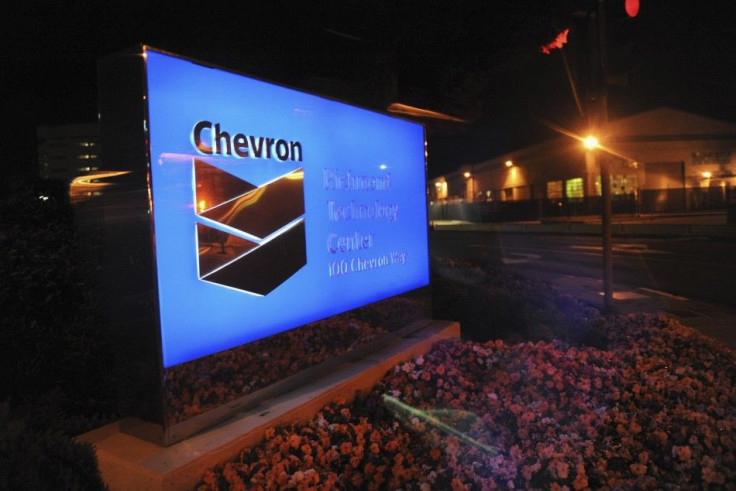Richmond, Calif. Fire Isn't The First For Chevron, Or Other Companies In Fuel-Making Business

Residents of Richmond, California can now open their windows and air out their homes after emergency personnel brought under control a fire at the Chevron (NYSE: CVX) Richmond Refinery, a massive 2,900-acre facility that primarily produces gasoline, jet fuel and lubricants and employs 1,200 people.
"I want to apologize to the community for the fire and smoke this evening at our Richmond refinery," the facility's manager Nigel Hearne told the press as emergency personnel were still working to contain the blaze Monday evening at a diesel unit of the refinery.
The fire, which broke out at 6:15 p.m. local time sent black smoke into the sky that could be seen from San Francisco, 18 miles away, was under control by 10:30 p.m. The community's shelter-in-place order - which strongly advises residents to remain indoors, close windows and other sources of outside air, limit phone traffic and stay tuned to the radio or television - was lifted by 11:15 p.m.
"I heard a big boom ... then the alarms started going off," resident Daniela Rodriguez, 23, told the local Contra Costa Times. "I was getting kind of scared. I went into my backyard and could see a big, dark gray cloud. I saw it was coming from where the refinery is, so I told my mom to lock the windows."
Richmond, a city of about 104,000 residents, is home to heavy industry and is familiar with such incidents.
Refinery fires and other accidents can be potentially hazardous to surrounding communities. Sulfur dioxide, sulfur trioxide, hydrogen sulfide, as well as organics such as benzene and phenol, all can have serious health effects in high concentrations.
According to the Bay Area Air Quality Management District, the facility has had the following recent incidents, which are common in refineries but require emergency preparedness for the communities around them, many of whose residents work or are somehow economically tied to the industrial activity:
Jan. 15, 2007: Fire in the refinery's crude until injured one worker. No release of toxins was reported.
Aug. 9, 2003: A temperature spike forced a shutdown of a reactor, causing emission of a half-ton of hydrogen sulfide, two tons of sulfur dioxide and six tons of "organics."
Jan. 31, 2002: An undisclosed amount of sulfur dioxide and hydrogen sulfide was released, forcing local safety officials to implement a shelter-in-place order.
May 21, 2000: Failure of a hydrogen compressor led to a 30-minute-long release of sulfur dioxide.
March 29, 1999: Explosion in a gas oil feed line sends smoke over the county. One of the four ground-level monitors detected minor readings of toxic emissions.
This track record is no indication that San Ramon, Calif.-based Chevron Corporation (NYSE: CVX) has a poor track record on safety. In fact, incidents like these occur quite regularly, even in a country with strong environmental oversight.
--
© Copyright IBTimes 2024. All rights reserved.






















